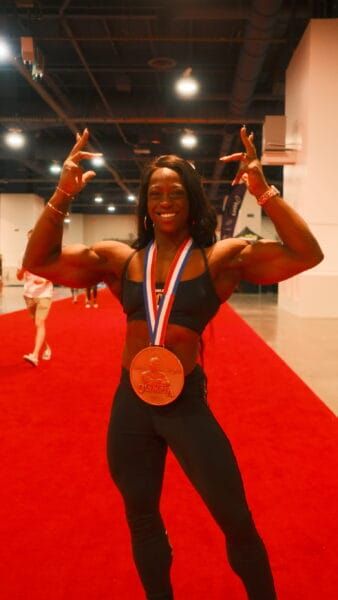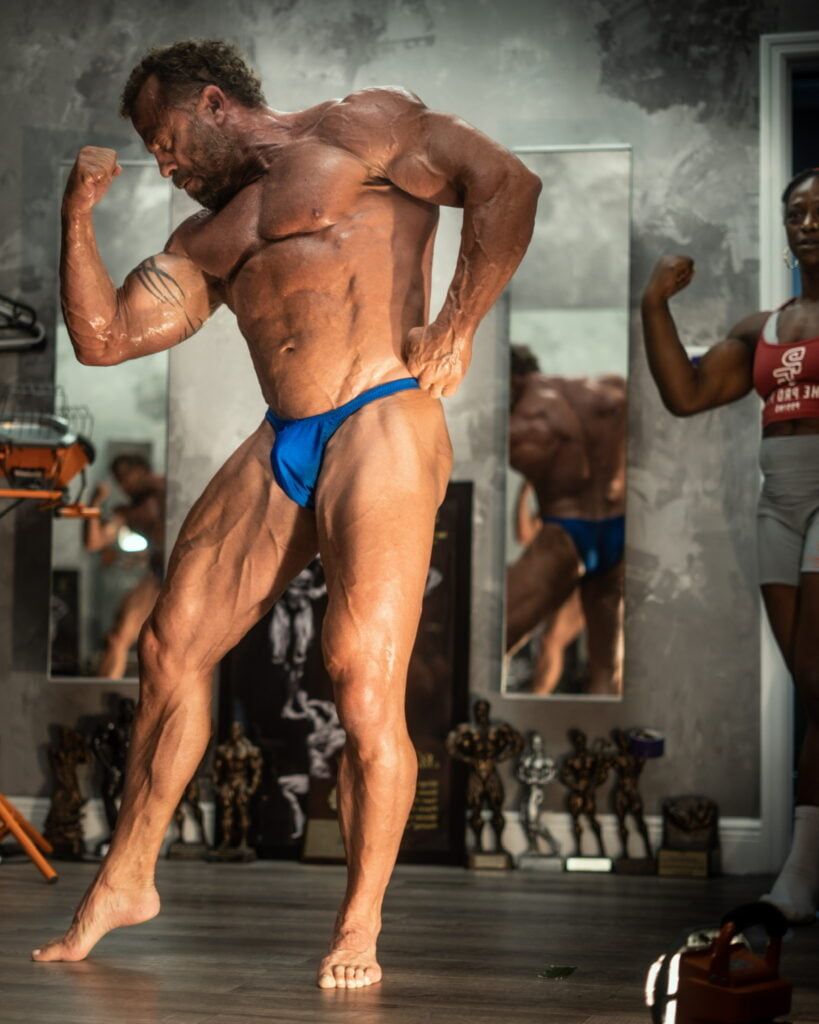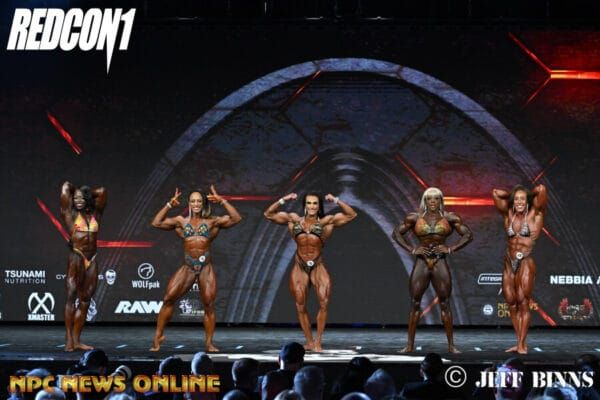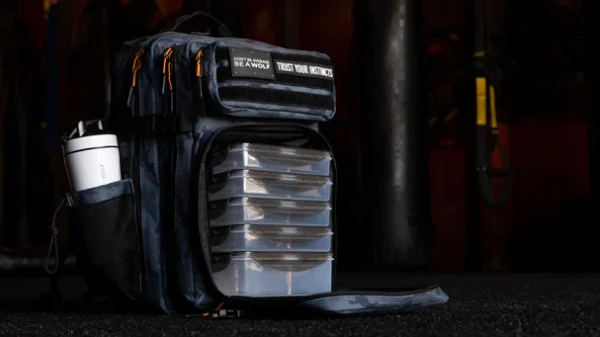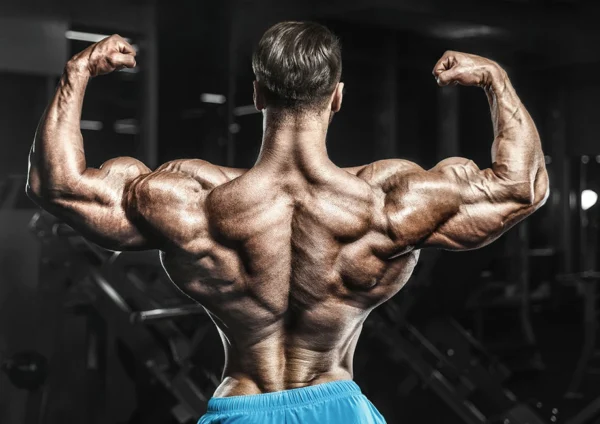Bodybuilding is not merely about muscle development. It also entails the skillful presentation of your hard-earned physique. Bodybuilding poses are a critical element of this presentation. The following article delves into the nuances of bodybuilding poses, offering tips and guidance on how to perfect your stage technique.
The Critical Role of Bodybuilding Poses in Competitions
Bodybuilding poses serve a crucial function in competitions. They’re not just about flexing and displaying your muscles. Instead, they provide an avenue to present your physique in the most attractive light, enhancing your strengths and downplaying any weaknesses. A well-executed pose can make a competitor appear taller, leaner, and more muscular, while an ill-conceived pose can achieve the opposite effect.
Moreover, bodybuilding poses offer an opportunity to display your personality and stage presence. A competitor exuding confidence and charisma, who can effectively command the stage, is more likely to captivate the judges’ attention compared to one who appears uneasy or uncertain.
Above all, bodybuilding poses serve as a medium to connect with the audience. A well-executed pose can evoke admiration, excitement, and even emotion, leaving an unforgettable impression that can be the deciding factor in a competition.
Components of a Successful Bodybuilding Pose
A winning pose comprises several components:
Symmetry: An appealing pose should demonstrate symmetry and balance in the physique. This entails ensuring that both sides of the body appear equally developed and proportionate.
Muscle Definition: A successful pose should accentuate muscle definition and separation. This involves flexing the muscles in a manner that enhances their size and shape, while maintaining correct form and posture.
Confidence and Stage Presence: A compelling pose should radiate confidence and stage presence. This involves making eye contact with the judges and audience, standing tall, and projecting an aura of energy and enthusiasm.
Transitions: A successful pose should transition seamlessly from one position to another, devoid of any awkward pauses or abrupt movements. This involves practicing transitions between poses until they become instinctive.
Effective Practice Techniques for Bodybuilding Poses

Practicing posing is vital for success in bodybuilding competitions. Here are some strategies to enhance your posing practice:
Practice in Front of Others: Practicing in front of others can help you acclimate to being observed and judged, which is critical for building stage confidence. Seek a trusted friend or coach who can provide constructive feedback on your posing technique.
Use Video Feedback: Filming yourself posing and reviewing the footage can help you spot areas for improvement and refine your technique. Use a tripod or have someone else hold the camera to ensure that you’re capturing full range of motion.
Practice with Props: Utilizing props like chairs, blocks, or resistance bands can help perfect your posing technique and transitions. For example, practicing your side chest pose with a block can help you attain the appropriate height and angle for maximum impact.
Practice Your Routine: Crafting a posing routine and practicing it consistently can help you build stamina and confidence on stage. Your routine should feature your best poses, transitions, and stage presence, and it should be customized to your physique and personality.
Crafting a Bodybuilding Posing Routine
Developing a posing routine is a crucial part of preparation for bodybuilding competitions. Here are some tips for creating an effective posing routine:
Choose Your Music: Your music selection can set the mood for your routine and help you get into the right mindset. Choose music that mirrors your personality and complements your physique.
Plan Your Poses: Your posing routine should feature your best poses and transitions, while also highlighting your personality and stage presence. Plan your routine in advance and practice it regularly. Train with The Pro Fit Posing.
Practice Your Transitions: Smooth transitions between poses are critical for a successful posing routine. Practice transitioning between poses until they become second nature, and ensure to maintain proper form and posture throughout.
Tailor Your Routine to Your Physique: Your posing routine should be tailored to your physique and strengths. For example, if you have remarkable leg development, include poses that showcase your legs.
Bodybuilding Poses
Strategies for Honing Your Bodybuilding Posing Technique
Perfecting your posing technique requires time and practice, but the following tips can help expedite the process:
Focus on Muscle Control: Posing is all about muscle control, so concentrate on flexing and contracting your muscles as hard as you can. This will help you achieve maximum muscle definition and separation.
Maintain Proper Form and Posture: Proper form and posture are essential for a winning pose. Ensure to stand tall, keep your shoulders back, and maintain a sturdy, stable base.
Practice Your Facial Expressions: Your facial expressions can communicate much about your personality and stage presence. Practice smiling, scowling, and making eye contact with the judges and audience.
Experiment with Angles and Lighting: Experimenting with varying angles and lighting can help you discover the most flattering poses for your physique. Try bodybuilding poses in different lighting conditions and from diverse angles to determine what works best for you.
Common Bodybuilding Posing Errors to Avoid
Avoiding these common posing errors can help you achieve a winning pose:
Poor Form and Posture: Slouching, hunching, or leaning can make even the most impressive physique appear mediocre. Ensure to maintain proper form and posture throughout your posing routine.
Lack of Symmetry: Uneven muscle development can make a physique appear unbalanced and unappealing. Ensure to work both sides of your body equally and highlight your symmetry in your posing routine.
Over-Exaggeration: Over-exaggerating your poses can make you appear unnatural and unprofessional. Concentrate on achieving a natural, controlled pose that showcases your muscles without going overboard.
Lack of Confidence: Lack of confidence and stage presence can make a competitor appear uncomfortable and unsure. Make eye contact with the judges and audience, stand tall, and project an aura of energy and enthusiasm.
Posing for Different Bodybuilding Categories
Different bodybuilding categories require varying posing techniques. Here are some examples:
Classic Physique: Classic Physique competitors should highlight their V-taper, wide back, and small waist. Poses should emphasize the upper body, with a focus on symmetry and balance.
Men ‘s Physique: Men’s Physique competitors should exhibit a lean, aesthetic physique with well-defined abs and obliques. Poses should be relaxed and natural, with a focus on stage presence and confidence.
Women’s Figure: Women’s Figure competitors should exhibit a balanced, proportionate physique with well-defined shoulders, back, and legs. Poses should be elegant and graceful, focusing on femininity and poise.
Judging Criteria for Posing in Bodybuilding Competitions
Judging criteria for posing in bodybuilding competitions can vary depending on the category and event. Here are some general guidelines:
Muscle Definition and Size: Judges will examine well-defined, proportionate muscles that exhibit the competitor’s hard work and dedication.
Symmetry and Balance: Judges will assess symmetry and balance in the physique, ensuring both sides of the body are equally developed and proportionate.
Stage Presence and Confidence: Judges will look for competitors who exude confidence and stage presence, with a natural, controlled posing style that highlights their best features.
Mandatory Bodybuilding Poses
Front Double Bicep: The Front Double Bicep is the first pose in the mandatory round. It is a pose where the competitor stands with their arms flexed, showcasing their biceps, chest, and abdominal muscles. This pose emphasizes the upper body, which is important for bodybuilding competitions.
Front Lat Spread: The Front Lat Spread pose is where the competitor stands with their arms extended outwards, showcasing their lats, chest, and abdominal muscles. This pose emphasizes the V-taper, which is the shape of the upper body that resembles the letter V.
Side Chest: The Side Chest pose is where the competitor stands sideways with one arm extended and one arm flexed, showcasing their chest, arms, and abdominal muscles. This pose emphasizes the chest muscles and is a classic pose that has been around since the beginning of bodybuilding.
Back Double Bicep: The Back Double Bicep pose is where the competitor turns around and flexes both arms, showcasing their back, biceps, and triceps. This pose emphasizes the back muscles and is important for a complete physique.
Back Lat Spread: The Back Lat Spread pose is where the competitor turns around and extends their arms outwards, showcasing their back, lats, and triceps. This pose emphasizes the back muscles and is essential for a complete physique.
Side Tricep: The Side Tricep pose is where the competitor stands sideways with one arm extended and one arm flexed, showcasing their triceps, shoulders, and abdominal muscles. This pose emphasizes the triceps and is important for overall arm development.
Abdominal and Thigh: The Abdominal and Thigh pose is where the competitor stands facing the judges with their hands on their hips, showcasing their abdominal muscles and thigh development. This pose emphasizes the lower body and is important for overall balance.
Conclusion and Final Thoughts
Mastering the art of posing is critical for success in bodybuilding competitions. It’s not just about flexing your muscles – it’s about presenting your physique in the best possible light, enhancing your strengths and downplaying your weaknesses. By following these tips and practicing regularly, you can perfect your posing technique and showcase your hard work on stage. Stay confident, focused, and above all, enjoy the process
